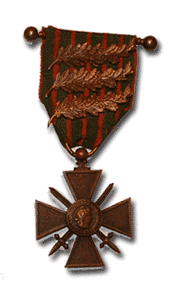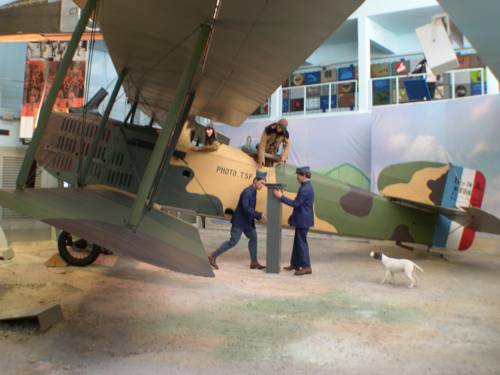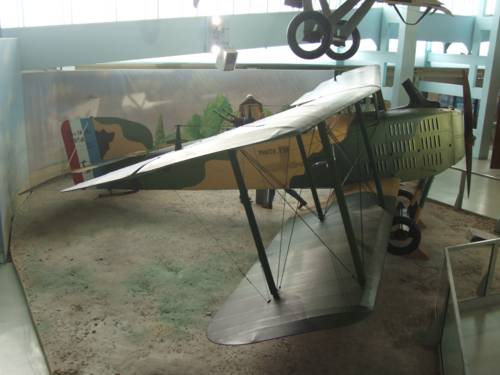United States Air Service
USAS HistorySummary 1917-1918 Lafayette Escadrille
N.124/Spa.124 1st Observation
1st, 12th, 50th, 88th 1st Pursuit Group
27th, 94th, 95th, 147th 1st Bombardment
96th, 11th, 20th 2nd Pursuit Group
13th, 22nd, 49th, 139th 3rd Pursuit Group
28th, 93rd, 103rd, 213th 4th Pursuit Group
17th, 148th, 25th, 141st 5th Pursuit Group
41st, 138th, 638th 3rd Air Park
255th. List of Aces
United States Naval Aviation
US Naval AviationUnited States Marine Corps Aviation
US Marine AviationAircraft
 Nieuport 28
Spad VII
Spad XIII
Fokker Dr.1
Albatros D.Va
Fokker D.VII
Nieuport 28
Spad VII
Spad XIII
Fokker Dr.1
Albatros D.Va
Fokker D.VII
Website: Atlanta SEO
E-mail us

1st Bombardment Group
The first bombardment squadron to get into action was the 96th Aero Squadron - a day bombardment squadron organized around 10 Breguet 14B2 bombers. The unit was established in the Toul sector on May 18th at the Amanty aerodrome. Amanty was a sleepy little hamlet - population 50, 150 miles east of Paris.

Breguet B14 (in French colors)
Rather than strike at infantry, the Breguets were tasked at interdiction type objectives - primarily railway centers initially - such as the double and quad track towns of Conflans, Audun-le-Roman, Longuyon and Dommary-Baroncourt.
The Germans had been mining the Briey iron mines east of Metz and then transporting the badly needed iron via these four German occupied French towns before entering into Germany proper. This area was very rich in iron and had been responsible for almost two-thirds of French iron output in the years prior to the war.
Secondary objectives were other railroads, munitions depots, command posts and any place German soldiers could unload from the railways. With this in mind, the 96th also had Mars-La-Tour, Vignuelles and Thiaucourt on its target list. All were clustered within a 30 mile radius.
The 96th's first attack was a six Breguet raid against the railway yards at Dommary-Baroncourt - a village located in between Thionville, Metz and Verdun - on June 12. The six planes dropped a ton of bombs across the rail yards, hitting the railway lines and a warehouse. This ton per raid average would be maintained during the month of August when formations of 10 Breguets, on average, dropped a total of 21.1 tons of bombs during 14 flying days and a total of 20 missions.

Breguet B14 (in French colors)
The limited German opposition consisted of Jastas 13, 15, 19, 64, 65 at Tichemont, Jastas 13, 34, 40, 42, 64, 65, 78 at Mars-la-Tour, 44 and 77 at Ars-sur-Moselle, 62, 68 and 74 at Preutin-Higny, and Jastas 12, 15 and 64 at Girau-mont.
On July 10 a flight of six Breguet 14B.2 bombers from the 96th Day Bombardment Squadron bombers got lost and landed near Coblenz, Germany, falling neatly into German hands without firing a shot.
Billy Mitchell wrote about about this incident:
"Our bombardment group was not in good condition... was poorly commanded, the morale was weak, and it would take some time to get on its feet. This was largely due to the fact that when I was away, the 96th Squadron was left behind in the Toul area. The officer who was then in command of the 96th flew over into Germany with what ships he had available for duty. He lost his way in the fog and landed in Germany with every ship intact. Not one single plane was burned or destroyed, and the Germans captured the whole outfit complete. This was the most glaring exhibition of worthlessness we had had on the front. The Germans sent back a humorous message which was dropped at one of our airdromes. It said, ‘We thank you for the fine airplanes and equipment which you have sent us, but what shall we do with the major [Harry K. Brown]?"
I know of no other performance in any air force in the war that was as reprehensible as this. Needless to say, we did not reply about the major, as he was better off in Germany..."
In all fairness, the mistake might have been somewhat understandable. The weather had turned to rain about an hour after the flight took off, bringing the clouds down to 100 meters (330 feet) and shutting down visibility. The planes were short on fuel and thus had to land.
There was only one other Breguet operational for the rest of July which the 96th duly used for bombing practice. 11 more Breguets arrived on August 1st which allowed operations to continue as they had before. The squadron flew for 14 days during August - probably the number of days the weather allowed bombing operations. In that time they dropped 21.1 tons of bombs during 20 bombing raids.
The German airfield and the railway station at Conflans were favorite targets in spite of its heavy anti-aircraft defenses. Following rivers made for good navigation and easier orientation. The village was located at the junction of the Moselle and Madon rivers which made it relatively easy to find.
The 96th hit Conflans with a total of 15,000 kilograms of bombs over the course of the war - meaning that 96th's efforts against just this 2.5 square mile village of 2,500 people accounted for one quarter of all bombs dropped by all four Day Bombardment squadrons against all targets during the entire war. During one raid on August 20th against Conflans, the 96th destroyed 40 German aircraft while they were still in railway boxcars and also killed fifty workmen and soldiers.
In spite of this had been the most successful of the bomber squadrons to date and it was the only US bomber squadron operating in combat for four months before other bomber squadrons started to go into action. It was the 96th that wrote the book on American bomber tactics and operational procedures.
During early September, the bad weather had turned the Amanty aerodrome into a field of mud. Fully half of the aircraft taking off broke propellers due to the mud.
Other squadrons used the DH-4 bomber. The DH-4 was a bomber made by the British company De Haviland. The United States started to produce the bomber under license, placing a 400 horsepower Liberty engine in the aircraft. These planes were known as either DH-4 or Liberty aircraft. DH-4s made in the US were reassembled and then tested at the Air Service assembly plant at Romarinton, France.
In total, USAS bomber squadrons made 150 attacks against German targets.
A 2nd Day Bombardment Group was formed and was ready to go into combat by November 6th, but poor weather straight to the time the Armistice was signed on November 11th prevented this group going into combat.
Learn more:
1st Observation Group,
1st Pursuit Group,
1st Bombardment Group,
2nd Pursuit Group,
3rd Pursuit Group,
4th Pursuit Group,
5th Pursuit Group and
3rd Air Park.
See the really cool USAS Bases Google Map we've made just for you.
File under:
1st Observation Group - 1st aero squadron, 12th aero squadron, 50th aero squadron
1st Pursuit Group - 27th aero squadron, 94th aero squadron, 95th aero squadron, 147th aero squadron, 185th aero squadron
1st Bombardment Group - 96th aero squadron, 11th aero squadron, 20th aero squadron, 166th aero squadron
2nd Pursuit Group - 13th aero squadron, 22nd aero squadron, 49th aero squadron, 139th aero squadron
3rd Pursuit Group - 28th aero squadron, 93rd aero squadron, 103rd aero squadron, 213th aero squadron
4th Pursuit Group - 17th aero squadron, 25th aero squadron, 148th aero squadron, 141st aero squadron
5th Pursuit Group - 41st Aero Squadron, 138th Aero Squadron, 638th Aero Squadron
3rd Air Park - 255th Aero Squadron
Events/Airshows
 Events/Airshows
Events/Airshows
Pilots/Aviators
 Raoul Lufbery
Raoul LufberyAce of Aces Eddie Rickenbacker
26 victories Quentin Roosevelt
Son of President KIA Frank Luke
18 victories in 17 days Eugene Bullard
1st African Am. Pilot David Ingalls
1st US Navy Ace List of USAS Pilots
Find a Relative American WWI Pilots
Mini bios
USAS Research
 USAS Videos
Reading List
USAS Videos
Reading ListWWI US Aviation Related Links
WWI US Aviation Credits War Wings
by Phillip W. Stewart WWI Maps
Units & Airfields Payne Field
USAS Aerodromes now... USAS Archives
Questions? Need Help? American Expeditionary Forces
WWI Doughboys in France